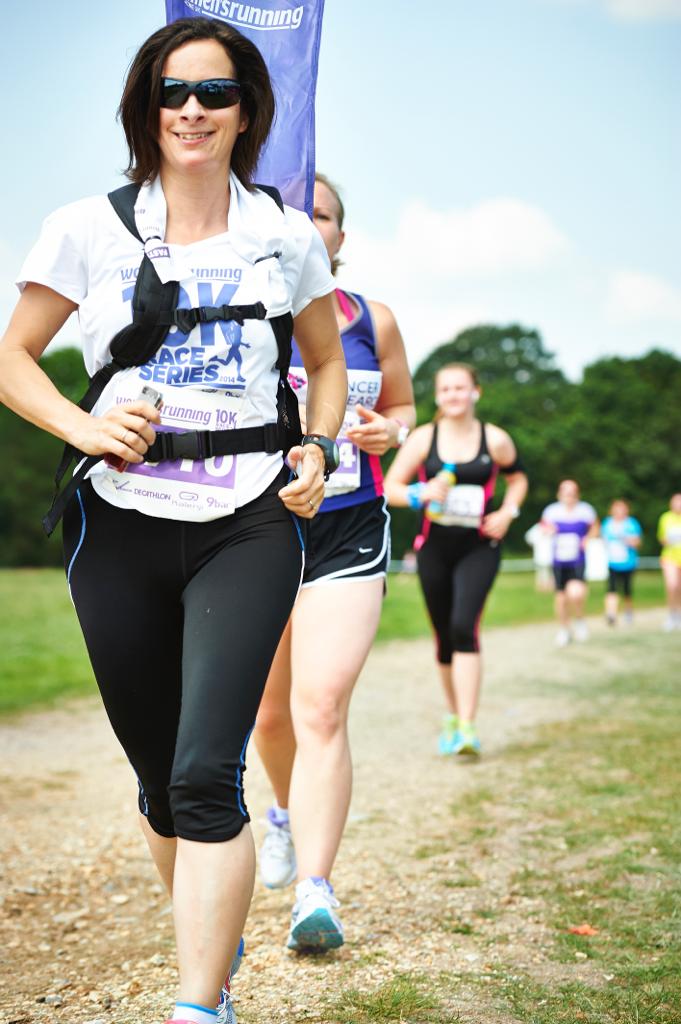Enjoy the many health benefits of running – including a more positive mindset – while reducing your injury risk.
Running has numerous health benefits. It’s great for improving heart health, keeping your weight down, and reducing your risk of diabetes and certain cancers. I personally love the idea of keeping my heart healthy through regular running and you don’t have to be super fit or fast to reap the benefits. Running strengthens your heart by decreasing your resting heart rate and improving the size and strength of the heart itself.
Experts believe that, from the very first running session (regardless of your speed) you’ll have made a positive change to your heart muscle. However, to keep improving heart health and maintain the benefits, you’ll need to run regularly, ideally three times per week. In a matter of weeks, your heart health will have improved considerably.
You don’t have to be young to start running even though many people wrongly think you do. Back in 2014, Bupa commissioned a survey of more than 2000 adults and found that 93 per cent of those aged between 50 to 65 didn’t run. The survey also revealed that even regular runners believed that once they were over 50, they wouldn’t be able to run.

This is a myth. I know many runners who have taken it up in their 50s, 60s and beyond. I recently heard of a 70-year-old lady who ran her first marathon and loved it. She was a relatively new runner and was inspired to take up distance running after reading a magazine article.
Another key benefit of running is convenience. On a busy day, you can do a short run and still reap the benefits of feeling fitter, healthier, and happier. Unless you prefer the treadmill, you don’t have to splash out on a gym membership, and you can run anywhere if you’ve got your trainers to hand (and a decent sports bra!).
Yet if you’re not careful, running can take its toll on your joints. When we run, at least three to four times our bodyweight is absorbed through the knees. Keeping your weight down will help – as even gaining just a few pounds can increase the amount of weight your knees have to absorb.
That said, you might be running to lose weight, and you don’t want to delay doing it until you’ve slimmed down, as running can aid weight loss.
The first sensible step is to invest in a supportive pair of trainers with appropriate cushioning chosen to suit your running style. We all have a different gait – some of us are heavier on our feet and our individual footwear needs vary tremendously. This is why it’s worth visiting a specialist running store instead of a general sports shop. Store staff can watch you run on a treadmill and can suggest the best type of footwear to suit you.
Once you’ve got the right trainers, you can ease the impact on your joints by choosing the most forgiving running surfaces.
The best surfaces to run on in terms of cushioning are flat grass (as long as it’s not too hard) and the treadmill rather than tarmac or concrete.
Many people think that running off road on grass or through the woods can be a good option to reduce impact. This can be the case, but it depends on how challenging the terrain is. Very uneven, soft, or muddy trails can put added pressure on the knee joints, as the knees try to stabilise your body and keep you upright while you cover uneven surfaces.
Running on tarmac or pavements is generally going to cause more wear and tear on a joint than a softer grass surface but all surfaces can present their own issues.
Road surfaces come complete with kerbs, cambers, and potholes, so you need to be careful when running in poorly lit conditions.
My advice is to vary your route as much as you can. If you always run the same route, in the same direction, you could be putting strain on one side of the body, such as the knee or hip, especially if your route has cambered pavements. Change or reverse the route sometimes.
While running downhill may feel easier, there is more impact through the knee joints. Unless you can completely relax, you may be inadvertently trying to brake as you run.
Grass can be easier on the joints but bear in mind it can be more challenging than road running. Your muscles will be working hard to stabilise you and you may find concrete a bit easier from a fitness perspective.
The treadmill is often considered easier than running outside as you’re not braving the unpredictable elements like wind and rain, and the surface is predictable. However, you can challenge your fitness on the treadmill if you want to by adding an incline or doing intervals, where you run fast for a minute, run slower and repeat. The treadmill can benefit your fitness levels considerably if you make the most of the incline and vary the type of sessions you try.
Overall, make sure you’ve got the right shoes, mix up your training and surfaces and don’t run every day, as your muscles, joints and ligaments need time to recover.
More Info
Christina Neal is a writer and editor and author of Run Yourself Fit and The World Marathon Books – both available on Amazon. She is also the former Editor-in-Chief of Women’s Running and Women’s Fitness magazines and has completed two marathons and 12 half marathons. Follow her on Instagram at christinahcneal.
